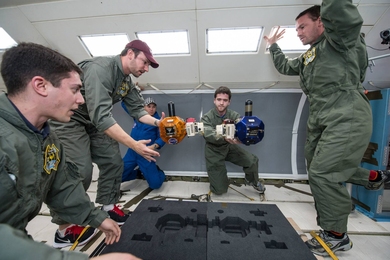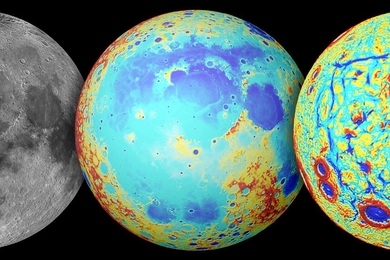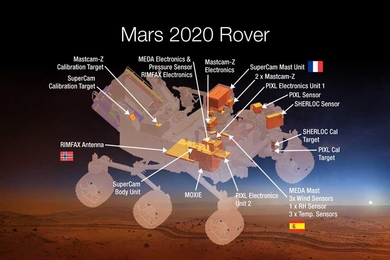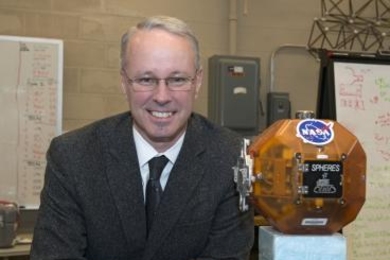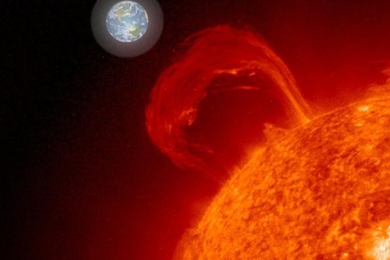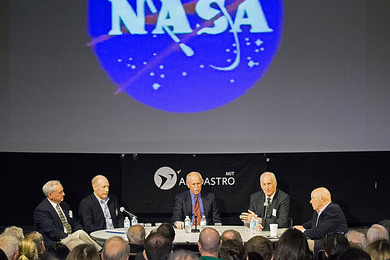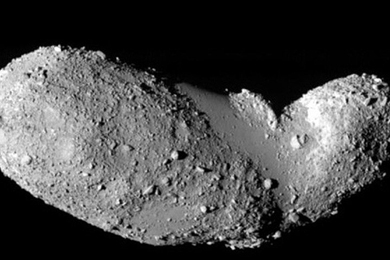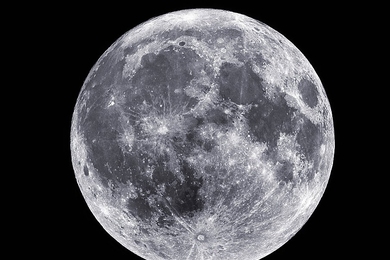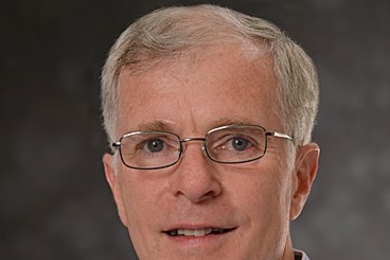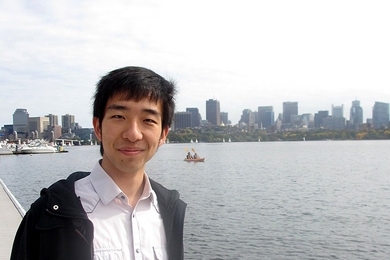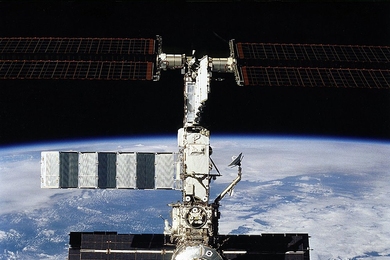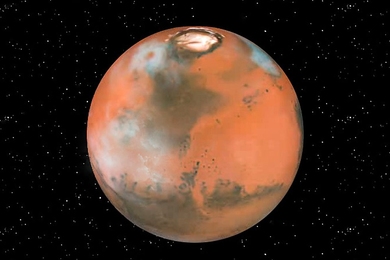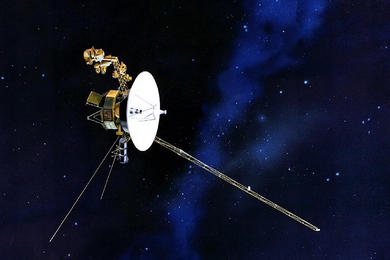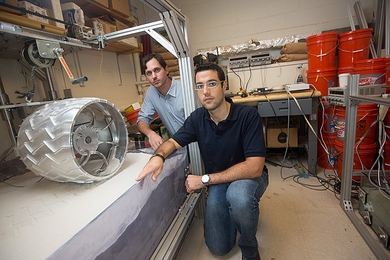Solving the mystery of the “man in the moon”
MIT researchers find that a volcanic plume, not an asteroid, likely created the moon’s largest basin.
Going to the Red Planet
An MIT oxygen-creating instrument has been selected to fly on the upcoming Mars 2020 mission.
AeroAstro professor David Miller named NASA’s chief technologist
Miller will serve as NASA’s principal advisor and advocate on technology policy and programs.
A river of plasma, guarding against the sun
MIT scientists identify a plasma plume that naturally protects the Earth against solar storms.
Rescuing the Hubble Space Telescope
NASA crewmembers reflect on the most complex space repair in history.
3 Questions: Richard Binzel on the discovery of three large, near-Earth asteroids
The largest asteroid is 12 miles in diameter, but poses little immediate threat to Earth.
The moon’s face doesn’t tell its whole story
Researchers find that huge craters on the near side of the moon may overstate the intensity of asteroid impacts about 4.1 billion years ago.
3Q: Don Boroson on NASA’s record-breaking use of laser communications
Lincoln Laboratory efforts could enable the space agency to significantly change the scope and design of future scientific space missions.
Coming home to MIT
Alum of MIT middle and high school programs returns to begin doctorate program in aerospace engineering
Making Martian clouds on Earth
Cloud-chamber experiments show that clouds on Mars form in much more humid conditions than clouds on Earth.
Q&A: John Richardson and John Belcher on Voyager 1’s crossing and interstellar exploration
Beyond the solar system, a probe launched in 1977 is likely to find a cold, dense sea of cosmic rays.
Terramechanics research aims to keep Mars rovers rolling
Simulations predict safest path for rovers to travel.
